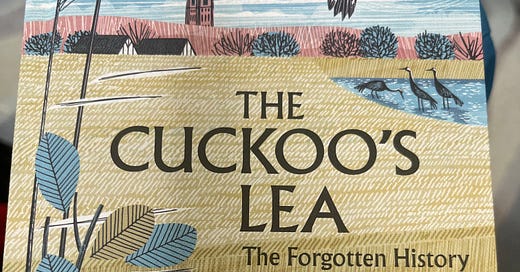A short review.
I have just finished this new book and can recommend it highly.
It is revelatory about the place names in Britain that have bird connections.
Some are very obvious, such as Cranfield, near where I grew up, which was a magnet then for people fascinated by booming new aeroplanes, but once was a perfect habitat for cranes. Others , more elusive because of the forgotten linguistic roots of so many place names.
Like many recent books about British wildlife this one is very good at describing the characteristics of its living subjects, whether avian or human, and the habitats in which they thrive- whether the messy scrub that harbours nightingales or the perilous mud which provides food and safety for geese and curlews- but the dimension I valued most the depth brought by the author’s historical knowledge and imagination.
He introduces us to the Anglo Saxon and Norse words for birds and the existing documents, such as the Seafarer and the Exeter Book which reveal an intimacy with birds and their lives, and a knowledge that inspired riddles and affection. We get glimpses into how much birds and landscape mattered in a world where intimations of wonder and mystery were the norm , rather than an aspiration. Where the presence or absence of nightingales and owls , for instance, might shape the way people perceived their world. Warren’s reflections on why myths grew up around the barnacle goose for example rescue medieval people’s observational powers and curiosity from much modern day condescension.
The book comes in two beautiful editions- one especially for independent booksellers, so do watch out for those, but best of all is an an enriching and occasionally humorous addition to contemporary nature and place writing.





My copy has just arrived - I'm looking forward to reading it even more now, thanks!